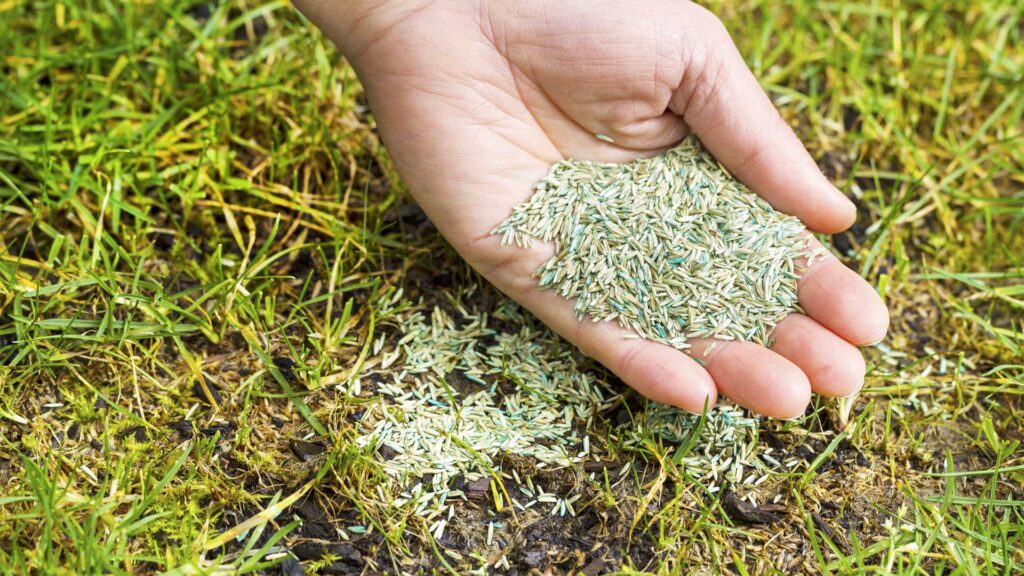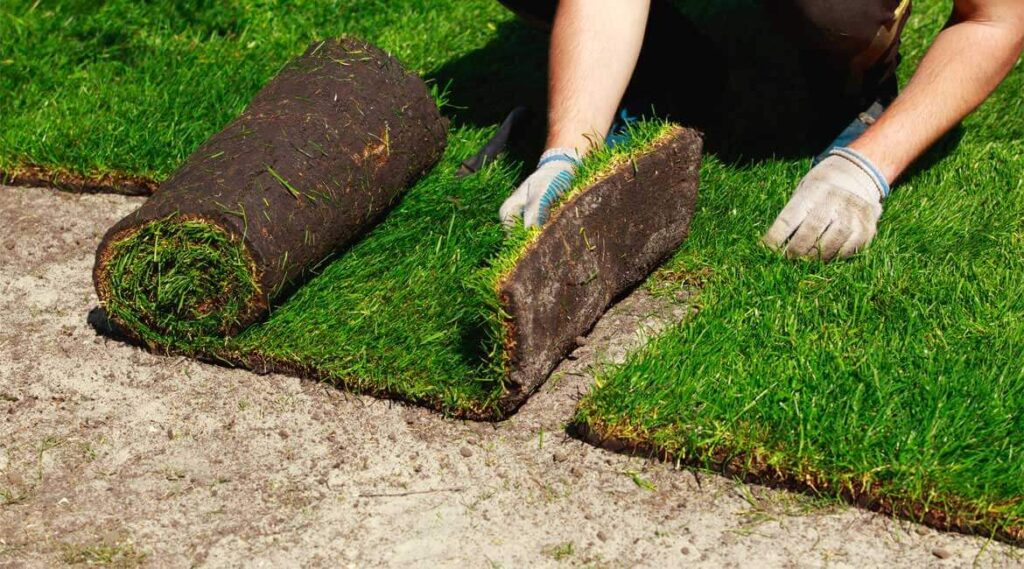Do you think it’s possible to seed grass in November?
Yes, it is! It is possible and it is very advantageous! Here is what this method consists of, as well as the advantages and disadvantages of opting for this technique.
What exactly is a dormant seeding?
Dormant seeding consists of sowing grass seeds late in the fall. Since the weather conditions are unfavorable for germination, the seeds remain intact in the soil for the duration of the winter. In the spring, thanks to the melting of the snow and the warming of the soil, the seeds germinate to allow the immediate establishment of the lawn.
How to make a dormant lawn seeding?
Such a seeding is done in the same way as a seeding done in spring. As explained in the article How to successfully seed your lawn, It is recommended to start by preparing the soil with a good rake and then add a thin layer of potting soil to ensure good contact between the seeds and the soil. Finish by lightly tamping the soil with a lawn roller.
Be careful! Some climatic conditions must be respected to succeed with a dormant seedling:
- The soil temperature must be below 10 °C for 3 to 5 days
- The air temperature must be around 0 °C for 3 to 5 days
- The soil must not be frozen so that the seed can bury itself slightly
If you sow too early, the seeds may start to germinate before the snow arrives and then die during the winter because they have not had enough time to develop. It is therefore essential to respect these three conditions to the letter.
Depending on your region and the weather for the current year, these conditions are usually met in early November, after the last mowing, but before the final snowfall.
What are the advantages and disadvantages of seeding grass in November?
At first glance, seeding late in the fall seems counterintuitive. However, there are several advantages to doing so, both for you and for the environment:
Benefits:
- No need to water: the snow melt takes care of everything by filling the soil with water in the spring, which is more than enough to make the seeds germinate. An ecological gesture!
- Since the seeds germinate as soon as the snow melts, the lawn becomes established earlier than a spring-seeded lawn. You can enjoy it as soon as the first beautiful days arrive.
Disadvantages:
- It is easier to miss: if the weather conditions listed earlier are not all present, the seeds could germinate prematurely and freeze over the winter. Conversely, they could also be washed away by erosion during winter rains or snowmelt. Your investment would then be lost, which is why it is important to do it at exactly the right time.
- Dormant seeding cannot be done on sloping ground, as the risk of erosion is too great. If this is your case, it is better to opt for the traditional technique.
Now that you know more about dormant seeding, consider this more environmentally friendly method the next time you need to seed or over-seed.
If you want to maintain a healthy, long-lasting lawn next season, make sure you’re providing all the nutrients it needs to grow by having your Nutrite Expert take care of it!
Reserve your spot for next year by requesting your free evaluation now.




